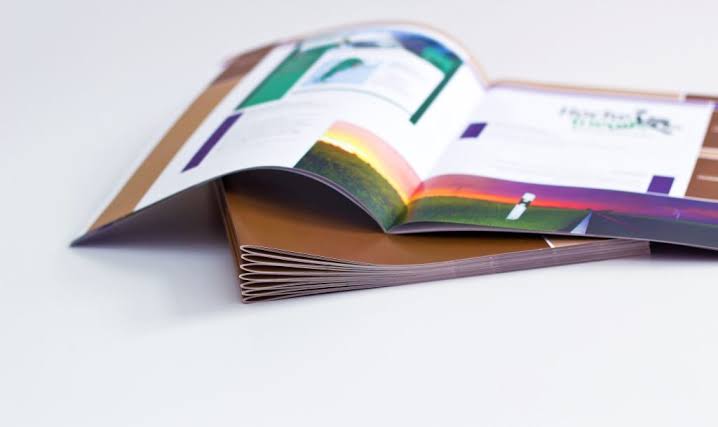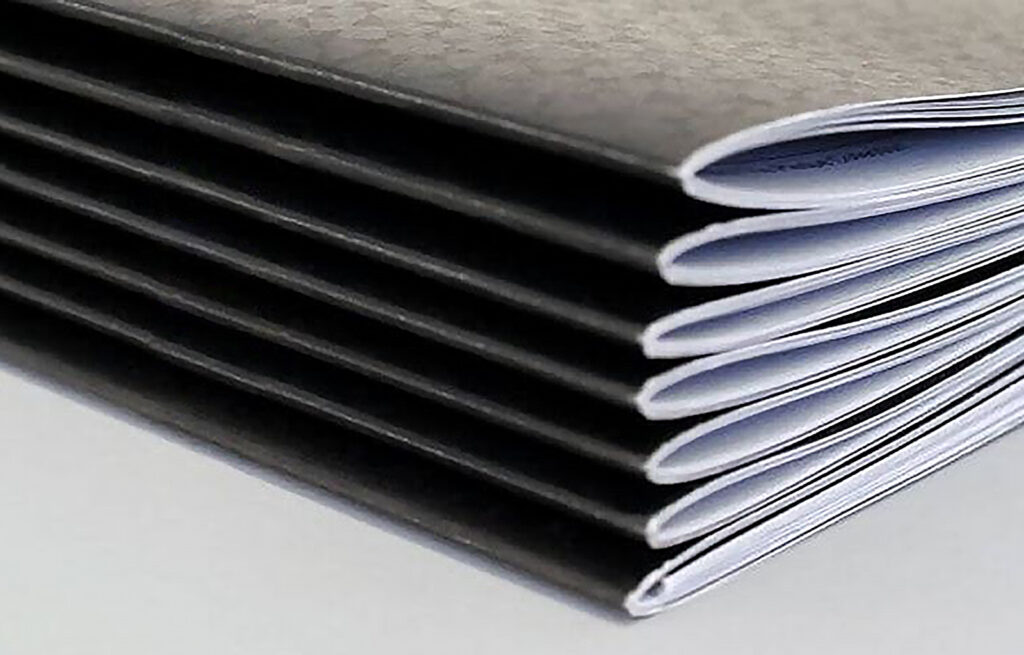
Binding 101: How Do Saddle Stitching Works
Understanding the intricacies of document binding methods is crucial for professionals in various industries who strive for both functionality and presentation in their printed materials. This article focuses on how saddle stitching works, a popular and efficient binding technique. Saddle stitching is essential for businesses, publishing houses, educational institutions, and print shops, where producing high-quality booklets, brochures, and magazines is essential. We will explore the process of saddle stitching, highlight its advantages compared to other binding methods, and provide examples of when this method is most effectively used. By the end of this article, readers will have a comprehensive understanding of why saddle stitching is a preferred choice for many short-run print projects.
What is Saddle Stitching?
Saddle stitching is a popular bookbinding method commonly used for creating booklets, brochures, magazines, and catalogs. It is well-suited for documents with a lower page count and involves securing folded sheets together along a central crease. This binding technique is widely used in various industries due to its simplicity and effectiveness in producing professional-looking printed materials.
How Does Saddle Stitching Work?
Saddle stitching is a straightforward and efficient binding method commonly used for creating booklets, brochures, magazines, and catalogues. Here’s how it works:
First, collating the pages: The individual sheets of the document are printed and then arranged in the correct order. Each sheet typically contains two pages on the front and two on the back, so when folded, they appear in the correct sequence.
Second, folding the sheets: The collated sheets are then folded in half along the middle, creating a spine. This folding process essentially turns the flat sheets into a booklet format with pages in the correct order.
Third, stapling the spine: The folded sheets are placed over a “saddle,” a piece of equipment that holds the booklet in a curved position. Staples are then inserted through the folded spine, usually using a saddle stitching machine. The staples penetrate through the folded crease and are clinched on the inside to bind the pages together securely.
Fourth, trimming the edges: After stapling, the edges of the booklet may be trimmed to ensure a clean and professional appearance. This step removes any uneven edges, giving the final product a neat finish.
Finally, inspection: The completed booklets are inspected to ensure that the pages are properly aligned and the staples are securely in place.
Saddle stitching is ideal for smaller documents, typically up to 80 pages, depending on the thickness of the paper. This method is appreciated for its simplicity, cost-effectiveness, and quick production time, making it a popular choice for a wide range of printed materials.
You can read more about our article covering the most frequently asked questions about saddle stitching.
Advantages of Using Saddle Stitching
Saddle stitching offers several advantages compared to other binding methods, making it a popular choice for specific types of printed materials. Here’s a comparison highlighting its benefits:
Cost-Effective:
- Saddle Stitching: One of the most affordable binding methods due to its simplicity and minimal use of materials.
- Other Methods: Perfect binding, wire binding, and hardcover binding generally involve higher costs due to more complex processes and additional materials.
Quick Production:
- Saddle Stitching: Fast to produce, allowing for quick turnaround times, which is ideal for time-sensitive projects.
- Other Methods: Methods like case binding and perfect binding take longer due to more intricate processes involving glue, drying time, or additional assembly steps.
Simplicity and Ease of Use:
- Saddle Stitching: The process is straightforward, requiring only folding and stapling, which can be easily automated for large runs.
- Other Methods: Methods like wire binding and perfect binding require more steps and specialized equipment.
Lay-Flat Design:
- Saddle Stitching: Documents can lay relatively flat when opened, making them easy to read and handle.
- Other Methods: Perfect binding and case binding do not lay as flat when opened, which can be less convenient for certain types of documents.
Lightweight and Portable:
- Saddle Stitching: Produces lightweight booklets that are easy to carry and distribute, ideal for brochures, catalogues, and magazines.
- Other Methods: Hardcover binding and wire binding result in heavier and bulkier documents, which can be less convenient for distribution.
Professional Appearance:
- Saddle Stitching: Offers a clean and professional look suitable for marketing materials, event programs, and newsletters.
- Other Methods: While case binding and perfect binding also provide a professional appearance, they are better suited for higher-end publications like books and annual reports.
Versatility:
- Saddle Stitching: Works well for documents up to approximately 80 pages, depending on paper thickness.
- Other Methods: Perfect binding, wire binding, and case binding are more suitable for thicker documents but may not be as practical for smaller publications.
Minimal Page Count Limitations:
- Saddle Stitching: Ideal for smaller documents and publications, often used for booklets, brochures, and thin magazines.
- Other Methods: Methods like perfect binding require a minimum page thickness to be effective, making them less suitable for thin documents.
Overall, saddle stitching is an excellent choice for short-run, lightweight, and cost-effective projects, providing a quick and professional binding solution that is particularly well-suited for marketing materials, small booklets, and event programs.
Best Projects That Use Saddle Stitching
Saddle stitching is best suited for projects that require a lightweight, cost-effective, and professional-looking binding solution. Here are some of the best projects that commonly use saddle stitching:
- Brochures: Ideal for marketing and promotional materials due to the cost-effective nature of saddle stitching and its ability to create sleek, easily distributable documents.
- Catalogues: Often used for product catalogues with a moderate number of pages, providing a professional appearance and easy readability.
- Magazines: Commonly used for short-run magazines and periodicals, offering a polished look while keeping production costs low.
- Booklets: Suitable for informational booklets, event programs, and instruction manuals, providing a neat and organized presentation.
- Newsletters: Frequently used for corporate or community newsletters, combining affordability with a clean, professional finish.
- Event Programs: Perfect for programs at conferences, weddings, and other events, offering a professional and easy-to-handle format.
- Annual Reports: Suitable for thinner annual reports, balancing cost and appearance for an impactful presentation.
- Instruction Manuals: Great for instruction and user manuals with fewer pages, ensuring they lay flat for easy reference during use.
- Photo Books: Used for smaller photo books, allowing for an aesthetically pleasing presentation while keeping production simple.
- Zines: Popular for small-scale, self-published magazines and artistic publications, due to the affordability and simplicity of saddle stitching.
These projects benefit from the saddle stitching method because it provides a professional appearance, is cost-effective, and allows for quick production, making it a versatile binding choice for a wide range of printed materials.
Best Saddle Stitching Machines in 2024
Here are some of the best saddle stitching machines:
- Sysform 106E Electric Stapler Flat Saddle
- Salco Rapid 106 R106E Electric Stapler
- DeLuxe Book Stitchers M17-AST
- MBM stitchmaster wire stitcher
- BM-35 Tabletop Booklet Maker with Square Back Feature
- SQ-70 Square Back Maker
Saddle stitching is a straightforward yet highly effective binding method, perfect for various printed materials such as brochures, booklets, magazines, and catalogs. Its simplicity, cost-effectiveness, and quick production time make it an ideal choice for businesses and organizations looking to produce professional-quality documents efficiently. By understanding how saddle stitching works and recognizing its many advantages, you can make informed decisions about your binding needs, ensuring your projects are both visually appealing and practical for their intended use.
Are you a business owner seeking to enhance your document organization and presentation capabilities? Consider the efficiency and professionalism that saddle stitching machines can bring to your operations. Contact us today to explore a range of saddle stitching solutions tailored to your specific needs, and elevate the way you present documents in your business.









